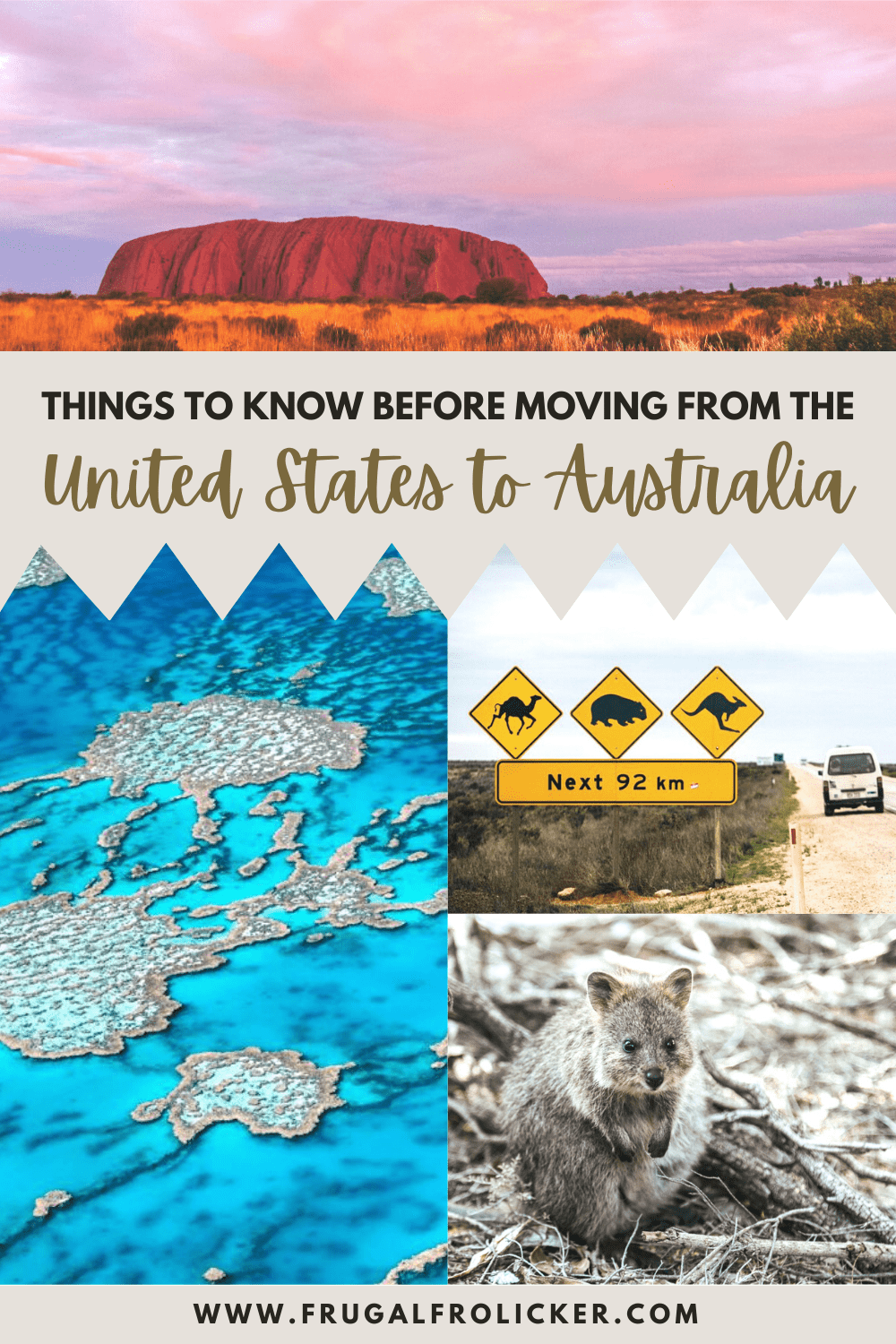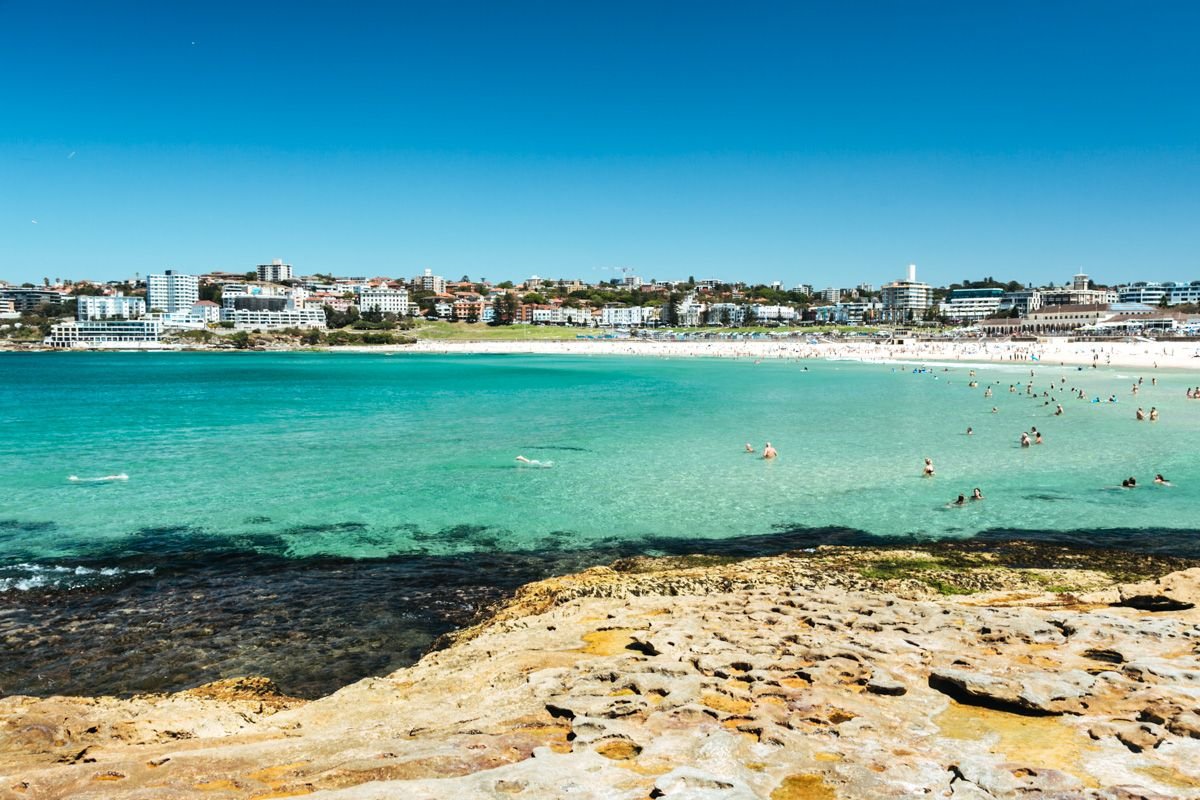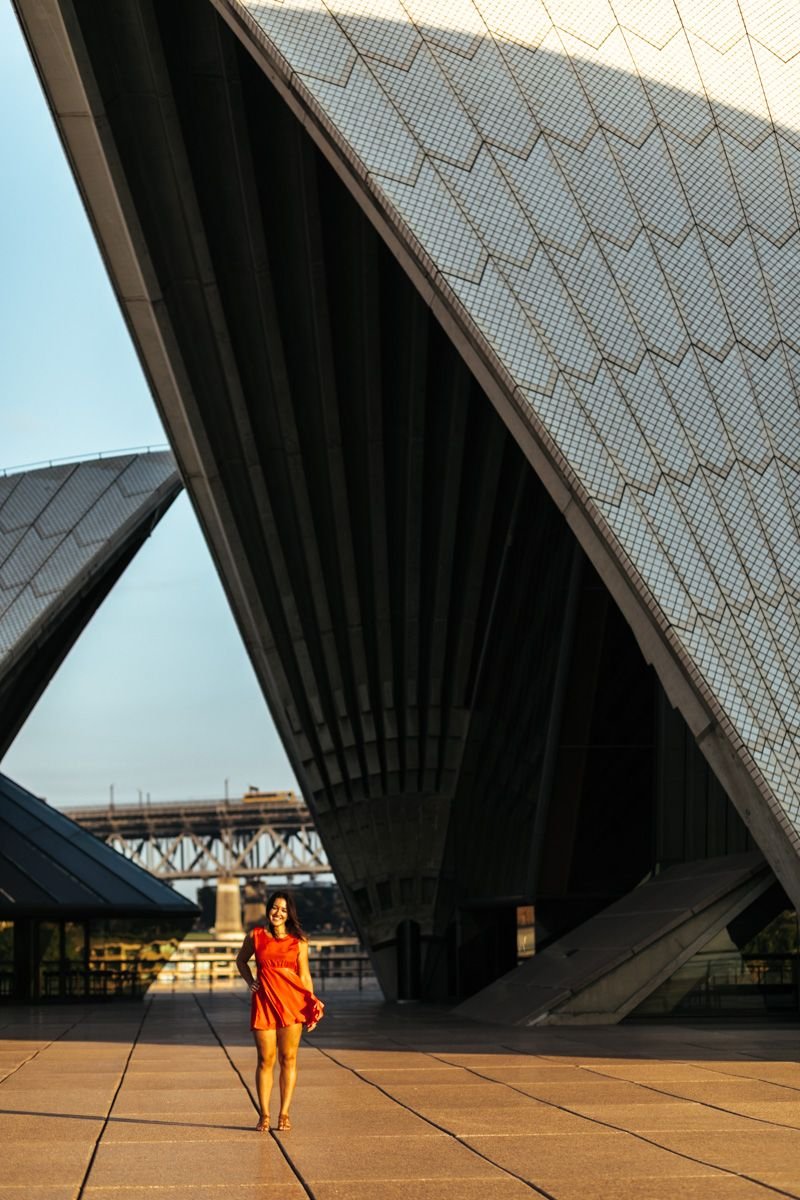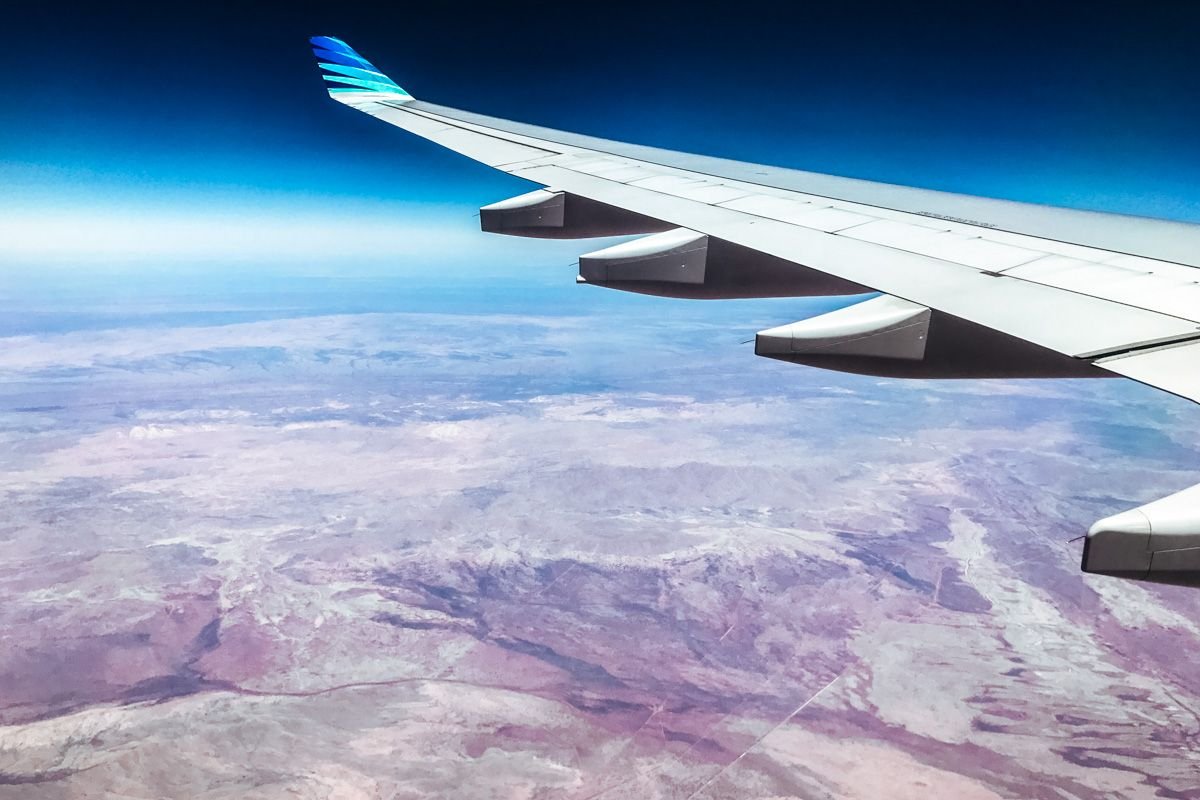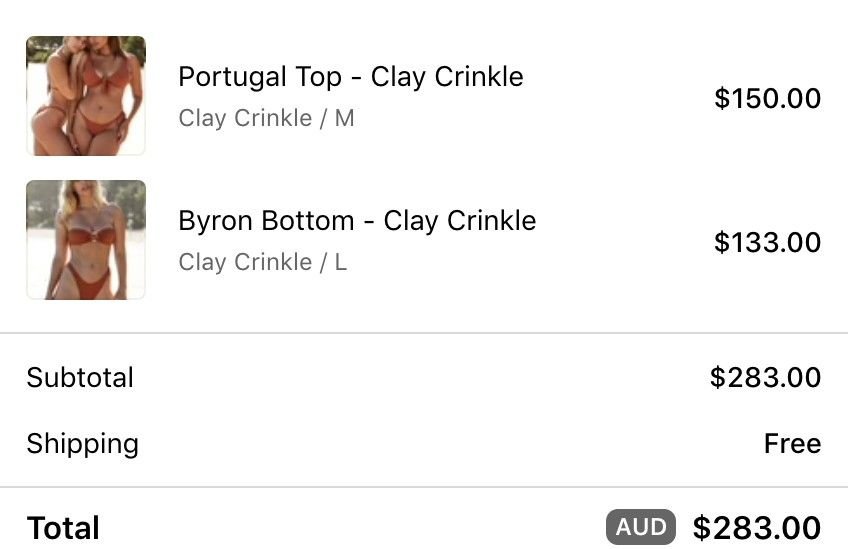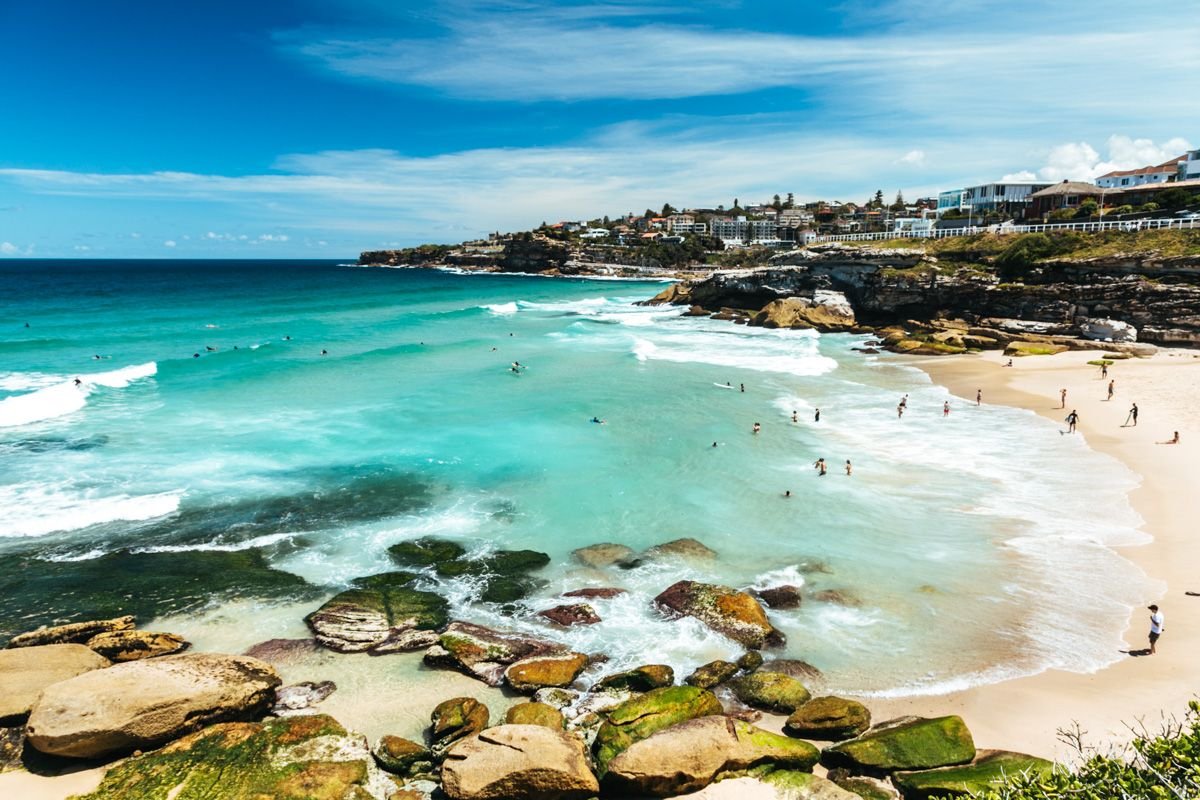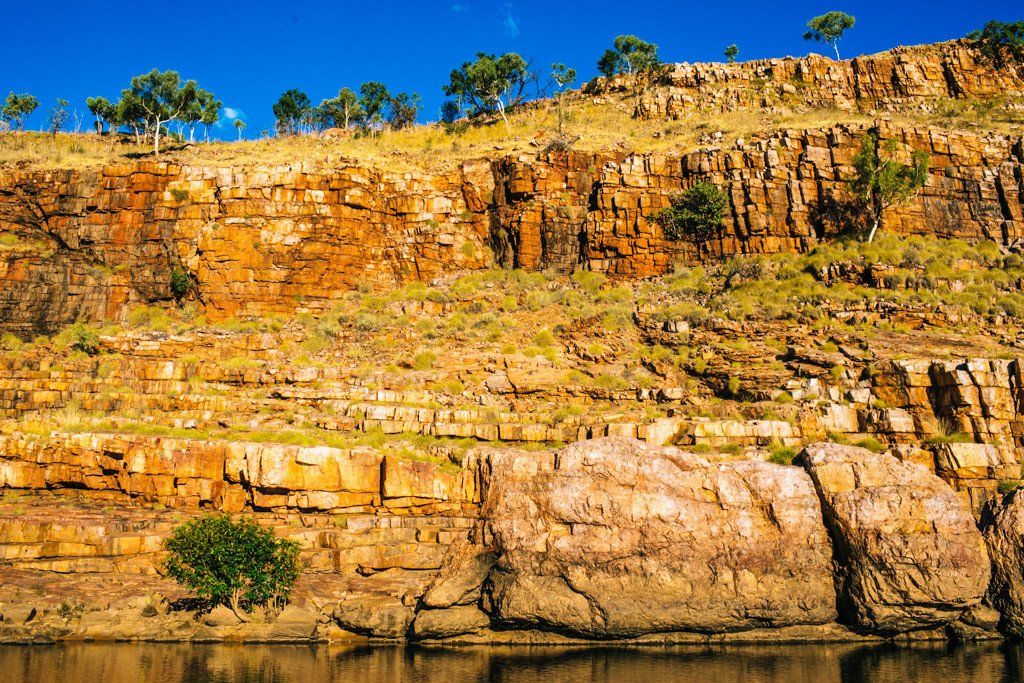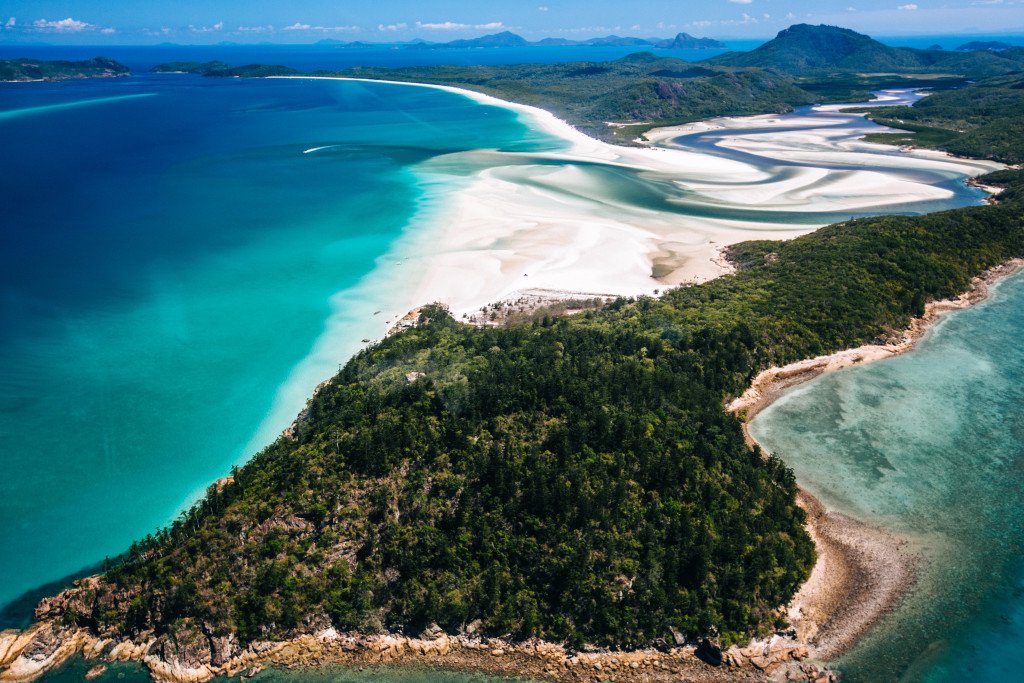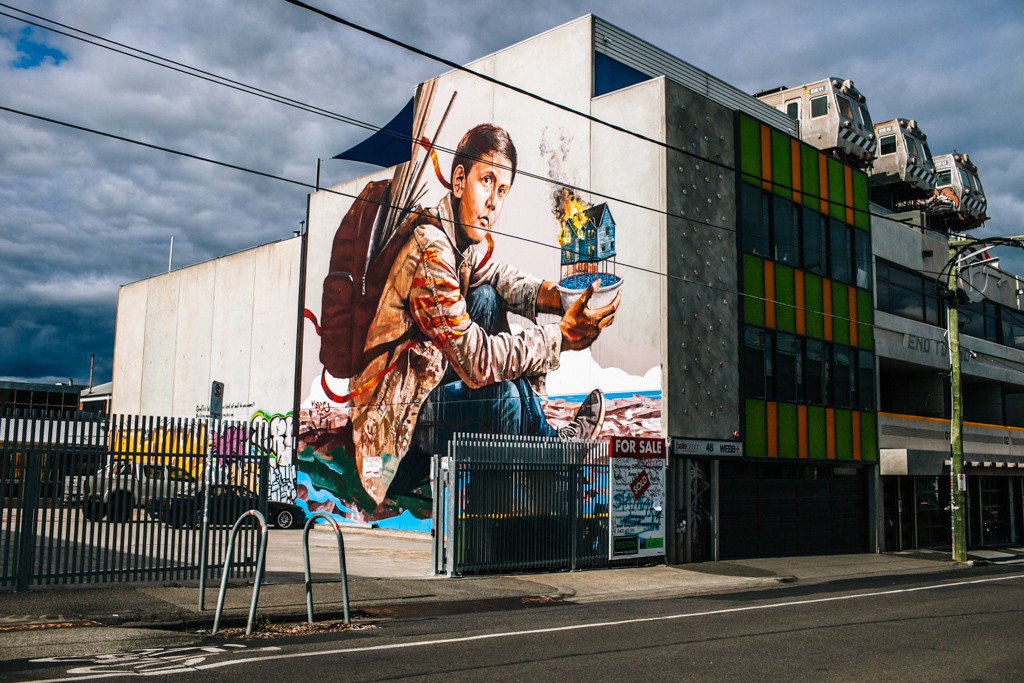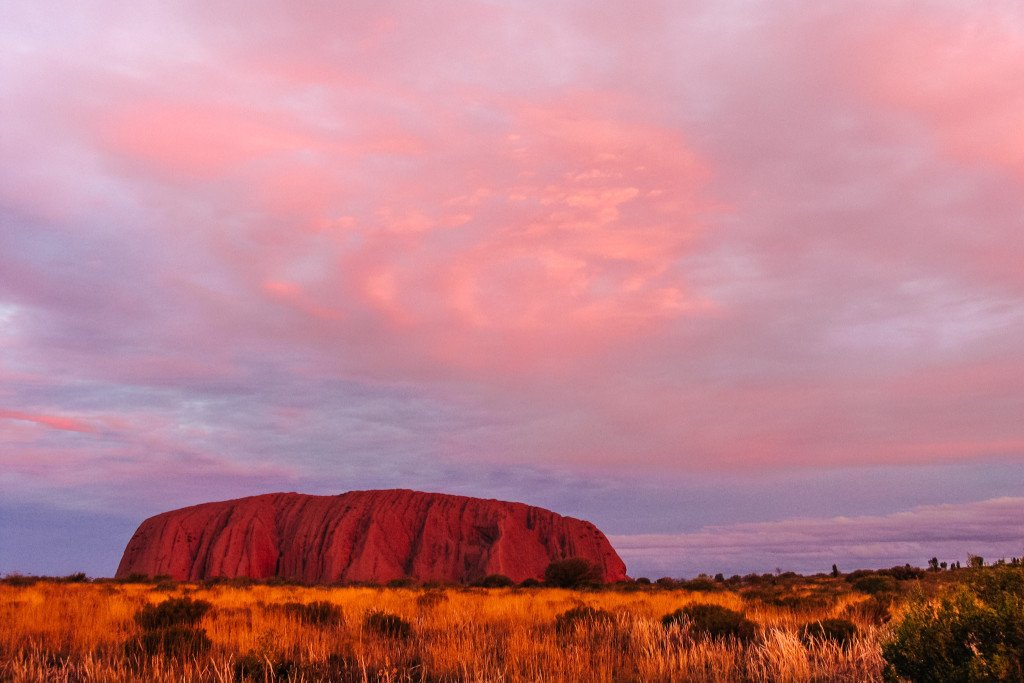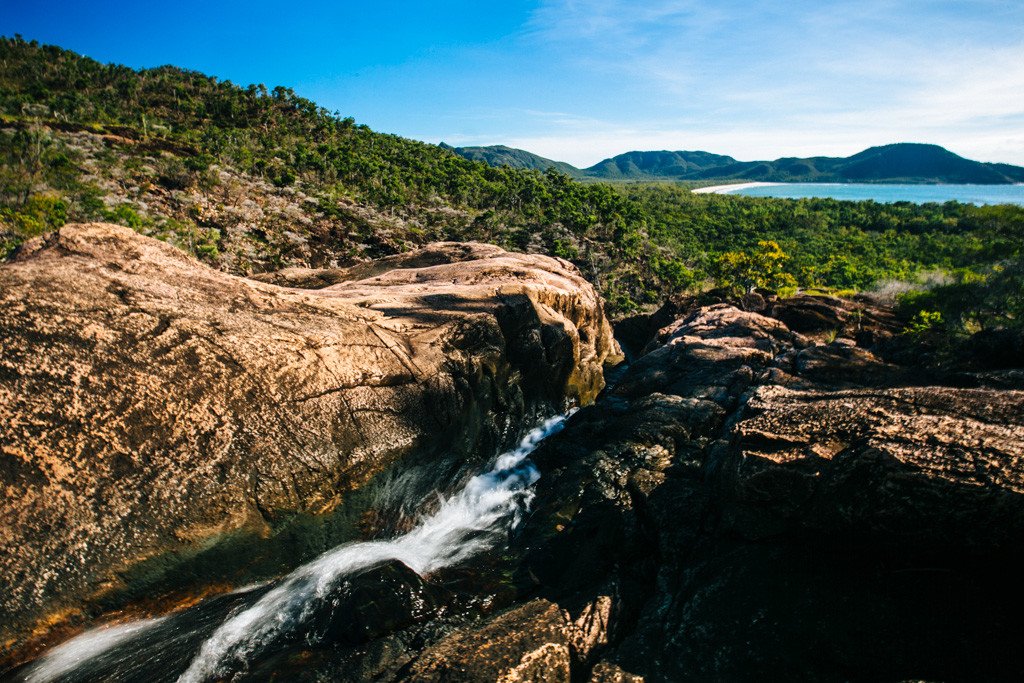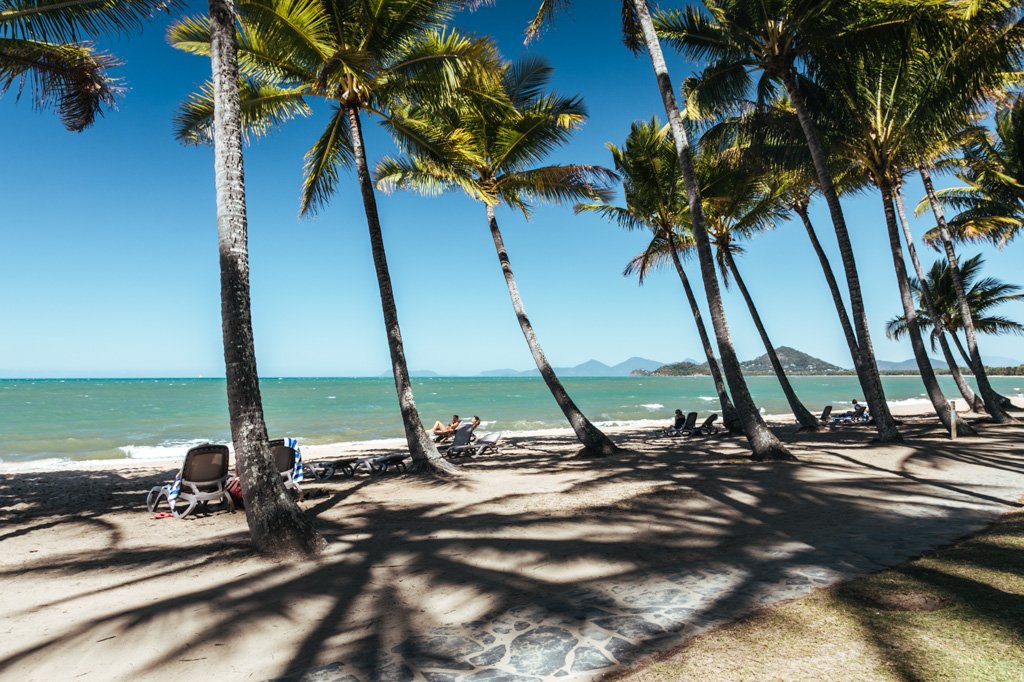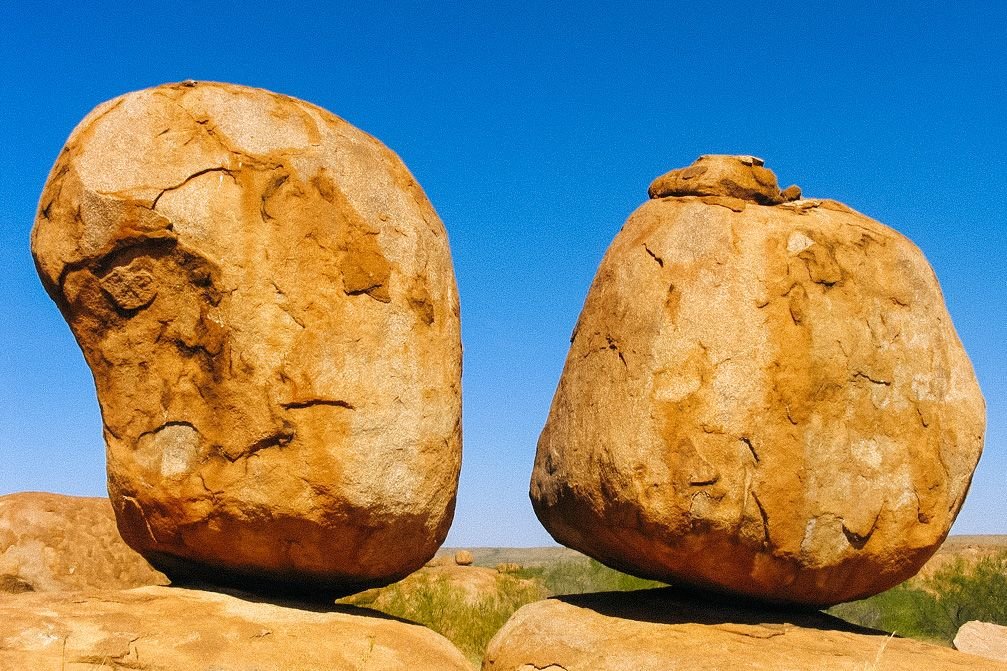This post was last updated on 2025 October 26
This article on What I Wish I Knew Before Moving From USA To Australia may contain affiliate links. If you click and make a purchase using these links, I will make a small commission at no extra cost to you. Thanks so much for supporting Frugal Frolicker! :)
My moving from USA to Australia was not based on reason or research, but on a gut feeling.
There was no planning, no worrying, no pro/con list that I agonized over – and honestly, if I were to go back and do it all again, I wouldn’t change a thing.
That said, there are numerous things that I wasn’t expecting that still sometimes throw me for a loop. Some I probably could have anticipated, had I done any amount of research beforehand; however, many I really couldn’t have known about until I got here.
And I’ll be honest with you, most of the points I’ve included in this post are complaints. I don’t mean to sound like a whinypants, I swear – it’s just that a lot of things frustrate me because they were so good/easy back in the US, and in Australia they leave much to be desired. If I didn’t have the US as a comparison, I’m sure I wouldn’t be anywhere near as bothered by these things.
But man, you never realize just how much America is the center of the world until you leave it. It’s a magical land where you have infinite options on tap, and everything just seems to be bigger and better and more convenient. I definitely took it all for granted when I lived there.
Even though these things frustrate me to no end, there’s still nowhere I’d rather live than Australia. I love it here so much!
(But Australia, if you’re listening – any chance you can sort your sh*t out re: the below? Pls + thx!)
Planning a trip to Australia?
These are the sites I use and recommend for booking travel:
ACCOMMODATION IN AUSTRALIA: I always search on Booking.com for accommodation, as their Genius loyalty program offers 10-20% discounts and free breakfast/upgrades for certain hotels.
FLIGHTS TO AUSTRALIA: When researching flights, I always check Skyscanner first because it pulls in flight options across all airlines and saves you the trouble of searching each airline individually. When booking flights via Skyscanner, I always book directly with the airline rather than one of the third party options.
CAR RENTAL IN AUSTRALIA: When renting a car on your travels, check DiscoverCars.com for the best deals.
ACTIVITIES IN AUSTRALIA: If you’re looking to book tours or other organized activities on your travels, GetYourGuide and Viator both offer myriad options for fun things to do all around the world (think: sailing trips, cooking classes, city walking tours, and more).
TRAVEL INSURANCE FOR AUSTRALIA: Unless you can easily afford to pay for huge unexpected medical bills, DON’T TRAVEL WITHOUT TRAVEL INSURANCE! These days, I usually buy the Safety Wing nomad insurance, as it’s very affordable and caters to digital nomads with a monthly subscription option. I’ve also been a longtime World Nomads user, and will still use them if I need more comprehensive insurance (e.g. for adventure activities) or if I am visiting the US (Americans aren’t eligible for Safety Wing’s US add-on option).
ESIM / SIM CARDS FOR AUSTRALIA: When traveling overseas, I always purchase an eSIM from Simify for the country I’m going to, activate it before I depart, and as soon as I arrive I am automatically connected to the local network and can easily find my way to my accommodation. No need to to buy a local SIM card at the airport; eSIMs are fully electronic and don’t require you to take out your old SIM.
LUGGAGE: I am currently a July luggage girl (July Australia / July US). They offer a lifetime warranty, which I have used multiple times now – and every time, they have sent me a brand new replacement suitcase without hassle. I recommend their Checked Plus if traveling with 32kg/70lb of luggage (note: many airlines do not allow bags this heavy!), the Checked if traveling with 23kg/50lb of luggage, and the Carry On Light (Expanded) which is super lightweight and really helps you stay within the 7kg carry-on limit that many Aussie airlines enforce. Click to read my full review of July luggage.
Here are some things I wish I knew before moving from USA to Australia:
Mexican Food: Not Great
Mexican’s my favorite cuisine, and it’s hard not to be bummed out about the fact that there’s no good Mexican to be had in Australia. I was so used to having excellent Mexican on tap in New York (and if I’d been living in California, I’m sure it would have been 10x better!).
I can’t say I’m surprised – after all, there aren’t a whole lot of Mexicans in Australia. But still, it’s a bummer when all we have for the most part are flavorless chains like Guzman y Gomez and Zambrero.
On the plus side, there are fresh avocados aplenty in Australia, and I’ve perfected my own guacamole recipe to get me through these tough, Mexican-less times. Also, Australia does have excellent Thai food, which might be my second favorite cuisine, so… it’s not all bad I suppose!
Online Shopping: Frustrating and Expensive
I wouldn’t call myself an avid shopper, but when I shop I prefer to do as much of it online as possible (#introvert4lyfe).
The problem is that much of the stuff I want comes from the US, and in nearly every case I have to deal with one of the following scenarios if I want to order from American retailers:
- They don’t ship from US to Australia
- They DO ship from US to Australia, but it’ll cost $30+ for shipping and/or take 3+ weeks to get here
Often I can find American brands sold by Aussie retailers, which mercifully cuts out the annoying international shipping process from my shopping experience. But the products are nearly always marked up, sometimes by a ridiculous %.

e.g. On Monday Swimwear’s US site, this swimsuit costs US$175 including shipping to Australia.
On Monday Swimwear’s AU site, the same swimsuit costs US$218 (AU$283). WHY THOUGH?!
I get that they have to cover overseas freight shipping costs, but when I can order the same product from the American website and have it shipped to Australia and the total price is noticeably cheaper than what I’d pay if I bought it from the Australian website… well, that’s just obnoxious.
My typical response to dealing with the dumb markup is to refuse to buy the thing and shop locally instead, but with essentials like electronics (which are pretty much all imported in Australia) I suck it up and pay the unofficial import tax.
On a positive note, I am SO glad that Amazon finally exists in Australia! Their inventory is nowhere near as robust as Amazon US’s, and Amazon Prime in Australia doesn’t even offer 2-day shipping, but still: this is progress, and I will take it!
Tax Returns: Double The Fun
Filing our tax return is something most of us dread doing, no matter our financial situation. But if you’re an American living and working in Australia, guess what? You have to file TWO tax returns each year!
Thankfully there’s an agreement in place so that we don’t have to pay double tax, so for me it means that I pay tax to Australia and not to the US. However, I still have to file a return for both countries, which means I have to endure that stressful process twice per year. Also, Australia’s tax year starts in July and ends in June, so I can’t even do them both at once.
At this stage, I’ve outsourced all tax-related matters to my accountants (yes, I have to have 2 because US tax law is apparently too complicated for Aussie accountants to want to tackle). If you’re an American living abroad, I can recommend Taxes For Expats for US tax returns (they do everything via an online portal so it’s super easy, no need to talk to anyone #didimentionimanintrovert). Use this link to sign up and get $25 off your first tax return!
Timezones & Seasons: Inconvenient and Backward
Sydney is 14 or 16 hours ahead of New York (depending on whether it’s daylight savings time). When it’s morning in one location, it’s night time in the other, which leaves a very narrow window of overlapping wake time during which you can converse with friends and family back home.
At this point, I’m used to playing message tag with my American peeps, rather than chatting to them in real time. It is what it is, I guess!
What messes me up is when it’s someone’s birthday back in the US, but because Australia is nearly a day ahead, it won’t really be their birthday until you’re about to go to sleep. I don’t want to message them too early, so usually I leave it for the next day – and I swear, the number of times I’ve very nearly forgotten to wish them a happy birthday the next day is embarrassing. But c’mon, try having to remember a birthday twice! Never imagined I’d have to do that.
The other instance in which the time difference really kills me is when I want to attend an online event of some sort, or tune into a training session or class I’ve signed up for, and it’s scheduled at a time that’s perfectly convenient if you’re in the US, but not at all if you’re in Australia.
The vast majority of online courses, masterclasses, and workshops I’ve joined or been interested in seem to occur around 5 or 6am AEST… which perhaps would be doable if I was a morning person. Unfortunately I’m not, have no desire to be, and don’t want to mess up my sleep schedule just to attend a meeting at stupid-o-clock. So for me, it’s watching the recordings rather than attending live, which is usually fine.
One course I was enrolled in actually switched up the weekly call times regularly (despite being based in California), which meant I was awake for at least half of them – yay! But that’s been very much the exception.
Maybe it’s time for me to start following more Aussie entrepreneurs, educators, and speakers?
Oh, and another thing: what’s with people forgetting about the southern hemisphere? Everyone seems to speak to their audience as if they’re all living in the same season, forgetting that half of the world is in the opposite season.
My personal remedy for this is to flee Australia during winter and head to the US or Europe to enjoy their summer ;)
Wi-Fi: As Bad As They Say It Is
Australian Wi-Fi is notoriously terrible. As in, currently ranking #61 on the global internet speed rankings out of all the countries in the world.
New Zealand’s internet is more than twice as fast as Australia’s on average… so you can’t blame remoteness.
Thailand, Vietnam, and the whole of Eastern Europe have internet speeds that put Australia to shame… so you can’t blame lack of funds.
For comparison’s sake, USA is #10 on the list and 3x as fast as Australia (I’m allowed to complain about that, agreed?).
So why is Australian internet so bad? In short, their rollout of the national broadband network (NBN) was delayed and poorly managed – as a result, the internet here is slow and unreliable. And as someone who spends the majority of her waking hours online, this deeply affects me.
I will say that NBN is significantly better than regular ol’ internet in Australia, but it’s still not available everywhere. Certain properties just aren’t set up for NBN (for example, my first apartment in Bondi was not, but my second apartment in Bondi was). Knowing this now, I’ll never sign another lease again without checking to see if NBN is available for installation at the property.
And now, one of my favorite things about traveling is getting to enjoy fast internet! Because it can’t get much worse than what I’m used to.
Australian Media: Small Scale and Uncensored
One thing that shocked me when I moved to Australia was the lack of censorship. In the US, they bleep the F out of everything so that you never hear even the most modest of swear words on TV or radio. In Australia… not so much.
I spent WAY too much time researching this topic and came up empty handed in terms of the rules and law behind media censorship in the two countries, but by my observation, songs don’t seem to be censored on the radio, and TV shows meant for mature audiences are allowed to air in earlier time slots in Australia (i.e. programs rated MA15+ start airing at 8:30pm). By contrast, on US radio you get the censored version of songs with profanity, and on US TV the equivalent “mature audience” programs only air late at night.
Just in general, swearing seems to be much less taboo in Australia than it is in the US. It’s just a normal part of casual conversation Down Under.
A few other things worth noting about media in Australia:
In the US, you virtually NEVER hear anything about Australia in the news. By contrast, in Australia it’s typical to hear something about the US nearly every day on the news. This is no surprise, given who the last American president was, and the fact that America’s population is 13x Australia’s. No news is good news as far as I’m concerned, so if there’s rarely any news on Australia that makes it to the US, then it probably means we’re cruising along and living in peace over here ;)
Also, Netflix only arrived in 2015 (about 6 months after I moved from USA to Australia), and sadly less than 40% of the programs on Netflix US are available for streaming on Netflix AU. You can get around this restriction by using a VPN, which essentially makes it look like you’re logging in from a US location, and then you can access all of the shows and movies available on Netflix US and other American streaming platforms like Hulu and Amazon Prime.
Honestly, this is a major pain in the butt and I hate having to pay for a VPN on top of Netflix, etc… so usually I don’t. If there’s something I’m dying to watch that’s not available for streaming in Australia, I’ll sign up for the streaming platform + VPN and then cancel after a month.
And of course, whether it’s Netflix or the big screen, most everything arrives in Australia later than it does in the US… which totally makes sense when the US is where most media originates from.
So in short, Australia gets limited and late access to the goods. I suppose it’s a good thing if it means you consume less media, but it’s definitely an annoyance as well.
Credit Cards: Not Really A Thing
In America, it’s normal to own multiple credit cards (and sadly, to max them out and get yourself into debt). It’s also extremely easy to get approved for a credit card, likely because of how much money they end up making from interest on late payments.
Like most everything in America, there are about a bazillion options when it comes to credit cards, and many come with added perks to entice you to use it like sign-up bonus points, plus points you can earn on certain purchases which you can redeem for flights, hotel stays, and more (depending on the card).
In Australia, it’s much less common to own a credit card, much more difficult to get approved for one (particularly if you don’t work a stable salaried job *COUGH*), and there aren’t many options at all. Most Aussies use a debit card instead.
When I first moved to Australia, I was amazed at the tap-and-pay (or PayWave) system most merchants have in place to make paying for purchases a breeze. There’s no swiping of cards or signing of receipts, like there is in America. Whenever I went to pay with my US credit card, I’d have to insert my card instead of swiping it; now, my Chase Sapphire Reserve card has that special chip in it so I can tap-and-pay like the Aussies do. But that’s a fairly new technology for America.
I haven’t been to the US in nearly 3 years now (!), so I’m not sure if tap-and-pay credit cards are common there now (if you know, leave a comment below and tell me!). Either way, I’m shocked that Australia is ahead of them on something for once!
Planning a trip to Australia?
These are the sites I use and recommend for booking travel:
ACCOMMODATION IN AUSTRALIA: I always search on Booking.com for accommodation, as their Genius loyalty program offers 10-20% discounts and free breakfast/upgrades for certain hotels.
FLIGHTS TO AUSTRALIA: When researching flights, I always check Skyscanner first because it pulls in flight options across all airlines and saves you the trouble of searching each airline individually. When booking flights via Skyscanner, I always book directly with the airline rather than one of the third party options.
CAR RENTAL IN AUSTRALIA: When renting a car on your travels, check DiscoverCars.com for the best deals.
ACTIVITIES IN AUSTRALIA: If you’re looking to book tours or other organized activities on your travels, GetYourGuide and Viator both offer myriad options for fun things to do all around the world (think: sailing trips, cooking classes, city walking tours, and more).
TRAVEL INSURANCE FOR AUSTRALIA: Unless you can easily afford to pay for huge unexpected medical bills, DON’T TRAVEL WITHOUT TRAVEL INSURANCE! These days, I usually buy the Safety Wing nomad insurance, as it’s very affordable and caters to digital nomads with a monthly subscription option. I’ve also been a longtime World Nomads user, and will still use them if I need more comprehensive insurance (e.g. for adventure activities) or if I am visiting the US (Americans aren’t eligible for Safety Wing’s US add-on option).
ESIM / SIM CARDS FOR AUSTRALIA: When traveling overseas, I always purchase an eSIM from Simify for the country I’m going to, activate it before I depart, and as soon as I arrive I am automatically connected to the local network and can easily find my way to my accommodation. No need to to buy a local SIM card at the airport; eSIMs are fully electronic and don’t require you to take out your old SIM.
LUGGAGE: I am currently a July luggage girl (July Australia / July US). They offer a lifetime warranty, which I have used multiple times now – and every time, they have sent me a brand new replacement suitcase without hassle. I recommend their Checked Plus if traveling with 32kg/70lb of luggage (note: many airlines do not allow bags this heavy!), the Checked if traveling with 23kg/50lb of luggage, and the Carry On Light (Expanded) which is super lightweight and really helps you stay within the 7kg carry-on limit that many Aussie airlines enforce. Click to read my full review of July luggage.
